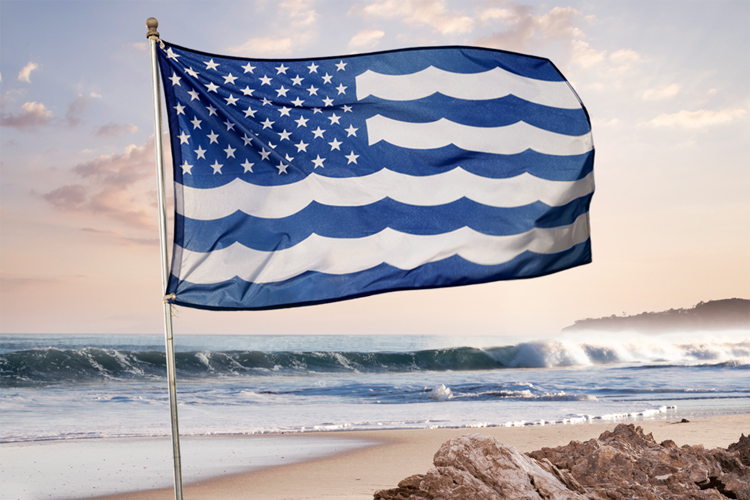On July 4, 2019, the Surfrider Foundation launches the United States and Oceans of America (USOA).
The non-governmental organization wants all Americans to protect the "land and oceans of the free and the home and waves of the brave."
As a result, Kelly Slater and Carissa Moore will join Eddie Vedder and Jack Johnson, flying the new flag of the United States and Oceans of America.
Surfer and musicians stand up to defend the coastal regions, climate change, offshore drilling, and plastic pollution, three problems that go hand in hand.
The Flag of the Ocean
"On Independence Day, we recognize that our country doesn't end by the shoreline. Today, we witness the largest assault on our ocean in American history," underlines Eddie Anaya, marketing director at Surfrider.
The USOA flag represents the nation's profound connection to the land and sea. In fact, the United States' oceans are 20 percent greater than its landmass.
With over 100 million tourists visiting US beaches every year and more than $124 billion of revenue coming from ocean recreation and tourism, protecting the coastline should be a top priority.
"I owe a lot to the ocean, so I'm holding this flag as a commitment to stand up for healthier seas and coastlines free of plastic for everyone," adds Jack Johnson.
According to Surfrider, the pollution at US beaches and waters costs the national economy more than $2.2 billion.
